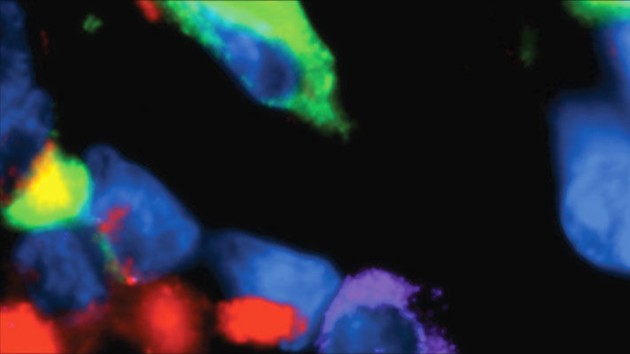Focus |
Collections
Filters
-
Collection Type
-
-
Focus |
Focus on non-alcoholic fatty liver disease
Non-alcoholic fatty liver disease (NAFLD) is the most prevalent chronic liver disease worldwide. The pathological spectrum of NAFLD ranges from simple steatosis to the necro-inflammatory and fibro-progressive form, non-alcoholic steatohepatitis (NASH), which may then progress to cirrhosis, liver failure and hepatocellular carcinoma. This web focus features papers from Laboratory Investigation and Modern Pathology that present new models and techniques, diagnostic advances, mechanistic insights and potential innovative therapies for NAFLD and NASH. Photo credit: Ming-Hong Tai
-
-
Focus |
 Showcasing China
Showcasing China
The editors of Laboratory Investigation (LI) are proud to present a Web Focus that showcases research by authors from institutions across China. We selected 20 recent papers to highlight the significant contributions of Chinese scientists to LI and to introduce the journal to an even wider audience. 《实验室调查》(LI)期刊编辑自豪地为您呈现“网络聚焦”部分,展现来自中国各机构的作者进行的研究工作。我们选取20篇新近论文,突出强调中国科学家对LI做出的重大贡献,并将本刊介绍给更为广泛的读者。
-
Focus |
 Focus on Breast
Focus on Breast
Modern Pathology and Laboratory Investigation are proud to present a special Web Focus highlighting recent advances in breast cancer diagnosis and treatment. We feature papers that describe testing guidelines, recommendations for standardized pathological evaluation, optimal specimen handling and management, factors affecting recurrence rate, the promise of immune-based therapy, and more.
Image: George F. Murphy -
Focus |
 Focus on Soft Tissue
Focus on Soft Tissue
The heterogeneity and relative rarity of soft tissue sarcomas make them challenging targets for classification, biomarker identification, and development of improved treatment strategies. Laboratory Investigation and Modern Pathology are pleased to present a collection of recent articles that enhance our understanding of the pathogenesis of these tumors and describe advances that may lead to the development of new diagnostic tests and targeted therapies.
Image: George F. Murphy

 Glycopathology
Glycopathology